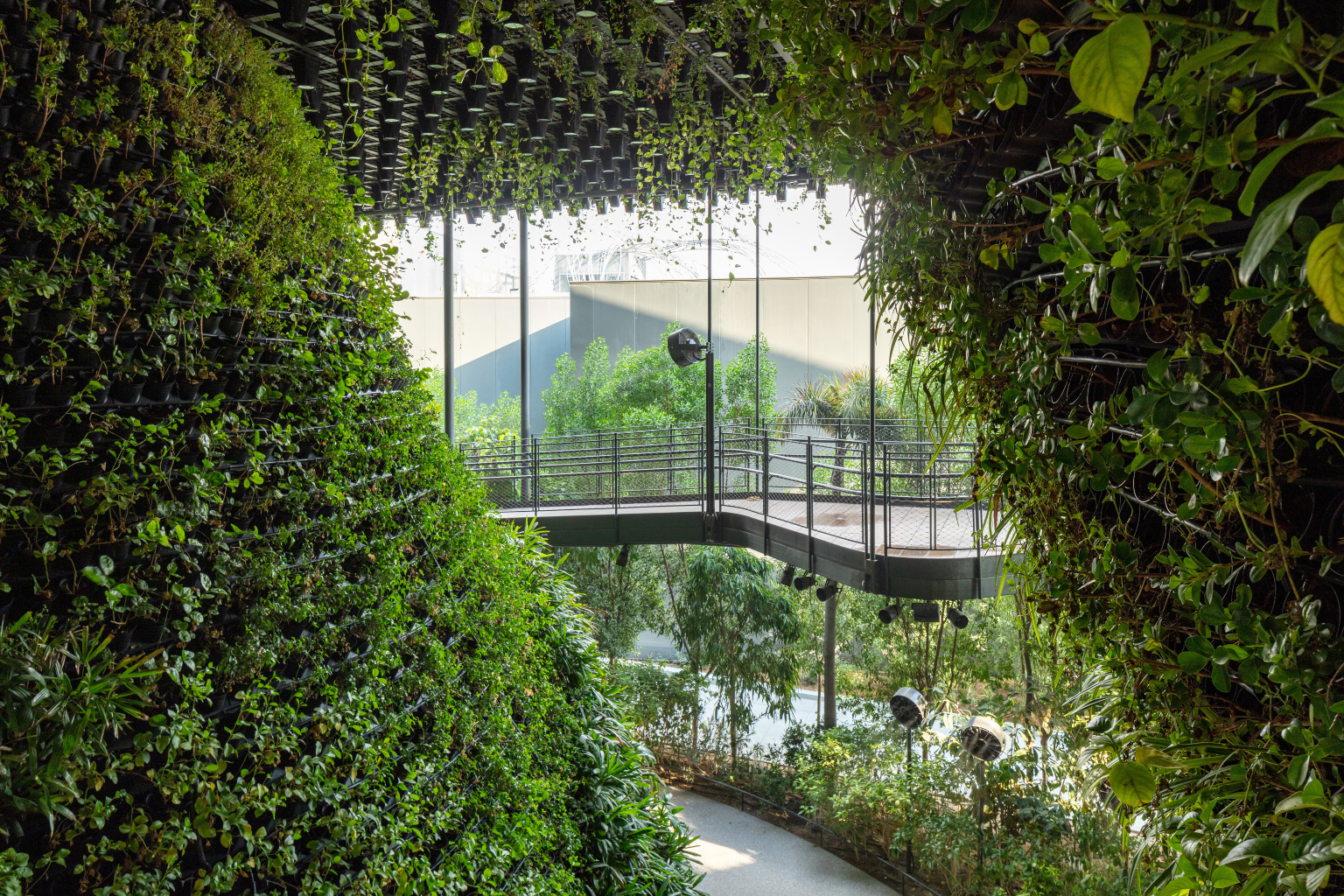The A-Zs that rocked 2021: Quest for sustainable city living
Sign up now: Get ST's newsletters delivered to your inbox

Visitors to the Singapore Pavilion at the Expo 2020 in Dubai can follow the Canopy Walk (pictured) through themed cones.
PHOTO: SINGAPORE PAVILION, EXPO 2020 DUBAI
Follow topic:
SINGAPORE - The Singapore Pavilion at this year's Expo 2020 Dubai presented a microcosm of what future cities can look like by integrating nature, architecture and technology.
Despite being one of the most densely built-up cities in the world, Singapore is also among the greenest and its pavilion reflects its aspiration to be a city in nature.
The World Expo - dubbed the greatest show on earth - is held once every five years. This year, it was launched on Oct 1 with 192 participating countries and the site spanned 438ha of desert land.
Singapore's pavilion, which sits on 1,550 sq m of space, showcases the land-scarce city state's innovative approach to urban development.
The Urban Redevelopment Authority worked with a team - helmed by Mr Wong Mun Summ, founder of home-grown architectural practice Woha; landscape specialist Salad Dressing; and lighting designer Light Collab - to design the pavilion.
Commissioner-General of the Singapore Pavilion Larry Ng called it "a sight to behold" that was "outstandingly green against the desert sands".
The pavilion is a self-sufficient ecosystem with net-zero energy aspirations, with its energy needs powered by 517 solar panels on its roof canopy throughout the six-month show.
Solar-powered fans produce a fine mist which, when combined with the shade and extensive greenery, lower perceived temperatures by 6 to 10 deg C without the need for energy-guzzling air-conditioners.
Then, groundwater which flows from the Persian Gulf is desalinated in a closed-loop water system and used for irrigation and misting for more than 80,000 plants and trees in the structure.
To make sure every plant is in tip-top condition, Salad Dressing, together with local start-up Oceania Robotics, designed three robots to monitor their health.
The Singapore Pavilion has been lauded by international media.
American news giant CNN called it a "standout" in an expo where there is no shortage of eye- catching pavilions, while The Times of India described it as a "natural paradise that is a far-cry from the usual expo exhibits".

Back home, Singapore has set firm targets for building sustainably and responsibly. Buildings produce almost 40 per cent of global carbon emissions, according to the World Green Building Council.
Here, buildings contribute more than 20 per cent of carbon emissions. The Government is aiming to green 80 per cent of the country's buildings by gross floor area by 2030.
As at end-2020, 43 per cent of structures were reported to be green, according to the Building and Construction Authority's Green Mark ratings scheme, which stresses energy efficiency and also considers how a building uses plants, manages waste and water, and maintains indoor air quality.
Other sustainability goals include increasing by as much as four times solar power deployment by 2025, boosting recycling to more than 70 per cent by 2030, and growing local food production to 30 per cent by 2030 through community-led efforts such as urban farming.

